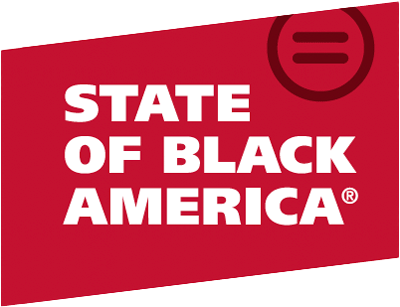Law firms with fellowship programs designed to grow the paltry ranks of Black lawyers in their midst are dragged to court with claims of race discrimination. Corporations receive threat letters for programs designed to support a diverse workforce, including retention and cohesion. A Black women’s small venture capital firm that seeks to invest in Black women-owned start-ups is battling for its existence in a court case. These legal battles — and the highly resourced and coordinated effort to scare businesses from doing right for their bottom lines while promoting the ideals of a diverse democracy — come as a direct response to the despicable Supreme Court decision last summer that eliminated the ability of colleges and universities to use race as one of many factors in considering admissions. They come as an ideological minority of actors demand that Black history and Black books be banned from schools and library shelves, and they come as we continue to battle for Black political voice and power in the form of voting districts and voting rights, control over our reproductive freedom, and criminal justice reform.
In such daunting times it can be easy to forget our power — and how we achieved the considerable progress we have made — and that the fights we must wage today are simply new battle lines in a very old conflict for the soul of the nation.
In truth, it is our hard-won successes that have produced such aggressive and long-standing strategies to undermine them. The most obvious example of this is the Civil Rights Act of 1964. Activism in many forms, from the 1963 Birmingham March, and the high cost Black people were willing to pay, pushed elected leaders to agree to champion major civil rights legislation with enforcement teeth.
That landmark law would prohibit discrimination in education, employment, and any program, public or private, funded with federal dollars, and it took a step toward ballot access. Southern senators filibustered the bill for a record five hundred and thirty-four hours, one minute, and fifty-one seconds.[1] Senator Everett Dirksen, the Republican Minority Leader, finally took to the podium and brought it to an end with these words: “The time has come for equality of opportunity in sharing in government, in education, and in employment. It will not be stayed or denied. It is here.”[2] The Civil Rights Act of 1964, with its 11 titles, ushered in a very different way of defining freedom and rights with the specific intention of advancing the rights and opportunities of Black people and all people of color, and people of different national origins and religions.
No one piece of legislation, not even massive ones covering major territory on the map of the human experience, can easily root out of the hard and dry soil all the tainted roots of racism. It would not do much related to housing, and its provisions on voting rights registration required passage of the Voting Rights Act of 1965 to make meaningful progress. The other provisions mattered, particularly because it created new tools for lawyers and required enforcement by the federal government. Yet, thanks to activism, court actions and acts of federal agencies would collectively help to produce longer life spans, more education, and more jobs for Black people. From barring recipients of federal funds from discriminating, requiring integrated public accommodations, and beefing up laws to ensure fair employment, the Civil Rights Act was history for its breadth.
In the 1950s, Black life expectancy was, on average, seven years shorter than that of white people and only 12,000 out of the South’s 3 million Black students attended integrated schools.[3]
Because Title VI of the Civil Rights Act barred discrimination by any recipient of federal funds, federal agencies now had, in addition to the carrot of federal dollars, the stick of clawing those dollars back if they found discrimination. Institutions and programs that had long discriminated against Black people — from education, to health care, to environmental permitting — could be challenged. Hospitals and other health programs that received federal aid had to open their doors to Black people. The racial life expectancy gap continues, but it narrowed to 3.6 years between 1990 and 2018.[4] Life expectancy for both groups stalled beginning in 2012, but the impact of improved access to health care and public safety net programs, such as Medicaid, have been important factors and are often federally funded and subject to civil rights protections thanks to Title VI.
Brown v. Board of Education famously proclaimed “separate” to be inherently “unequal,” but it anemically demanded integrating schools “with all deliberate speed.” That prompted something more like “all deliberate resistance.” Title VI was an important tool. In the years following Brown v. Board of Education to fiscal year 1966, the federal investment in education had skyrocketed from $3.8 billion to $13.6 billion, so Title VI had real teeth.[5] Thanks to Title VI and civil rights attorneys and community activists, “intense segregation,” defined as schools with 10 percent or less white students, fell very sharply. In 1968, 78 percent of Black students attended intensely segregated schools in southern states. By 1988, 24 percent were in intensely segregated schools.[6] Disturbingly, since the late 1980s with a shift in the make-up of the federal bench, we have seen decisions more hostile to interpretation of Title VI and civil rights protections in general.[7] Judges are political appointees and every election has consequences for the court system’s commitment to civil rights enforcement, but the gains attorneys and activists achieved required Title VI.
Title II of the Civil Rights Act required that all public accommodations, like restaurants and movie theaters, could no longer refuse to serve Black people. Over time, activism impacted overt racism.[8] Civil rights groups swung into action immediately after the law was passed to test implementation and press for enforcement. Equally essential, the law charged the U.S. Department of Justice with Title II’s enforcement, along with Title IV and its other provisions. The Department of Justice brought 93 cases in the first three years after the Act’s passage.[9] Title VII not only made employment discrimination unlawful, but it was understood to ensure fair outcomes.[10] Black job opportunities, while still far from sufficient, are significantly better, with less of a wage gap and less of an employment gap.
Studies have shown improved economic success for Black students in integrated schools and no decline in white outcomes for those bused to predominantly Black schools. Interestingly, a more recent study found something deeper than economics. White men who were part of school integration strategies in Louisville, Kentucky, in the early 1970s “were more likely to register as Democrats and to support liberal causes four decades later than white-male peers who were not.”[11]
Today, more than ever, we must revisit our victories and what they produced in order to fortify ourselves for the fights we continue to face. We must remember fighting has never stopped — and when we fight, we win.
[1] “On Civil Rights: June 10, 1964.” The Dirksen Congressional Center. [Originally published in the Peoria Journal Star, June 10, 2004.]
[2] . “Speech to Senate on the Civil Rights Bill.”June 10, 1964.
[3] Purdum, Todd. (2014) An Idea Whose Time Has Come: Two Presidents, Two Parties, and the Battle for the Civil Rights Act of 1964. Pg. 14. Macmillan Publishers.
[4] Huber, B. Rose. “Life Expectancy Gap Between Black and White Americans Closes Nearly 50% in 30 Years.” Princeton School of Public and International Affairs. Sept. 28, 2021.
[5] Determan, Dean W. & Gilbert, Ware. “New Dimensions in Education: Title VI of the Civil Rights Act of 1964.”
The Journal of Negro Education. Vol. 32, No.1. Pgs. 5-10.
[6] Orfield, Gary & Jarvie, Danielle. “Black Segregation Matters: School Resegregation and Black Educational Opportunity.” The Civil Rights Project. Dec. 2020. Pg. 4.
[7] Ibid.
[8] Mazumder, Soumyajit. “The Persistent Effect of US Civil Rights Protests on Political Attitudes.” American Journal of Political Science. Vol. 62, No. 4. Oct. 2018.
[9]Wright, Gavin. “The Regional Economic Impact of The Civil Rights Act of 1964.” Boston University Law Review. May 2015. Vol. 95. Pg. 763.
[10] Mollica, Paul W. ”The Unfinished Mission of Title VII: Black Parity in the American Workforce.” The Journal of Gender, Race, and Justice. Dec. 17, 2022. Pg. 140.
[11] Gilbert, Katie. How Did School Desegregation Shape the Political Ideology of White Students Later in Life?”
Kellogg Insight. Sept. 1, 2020



